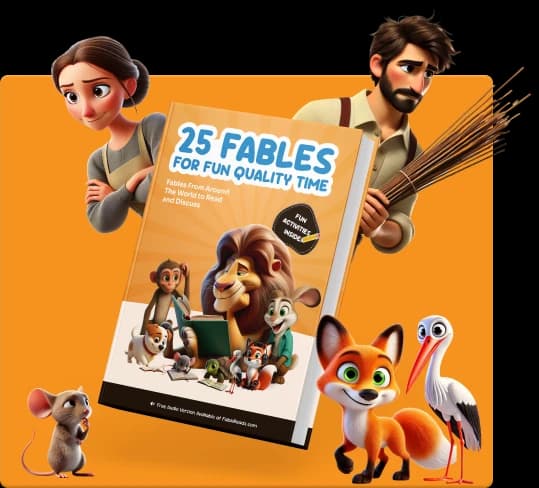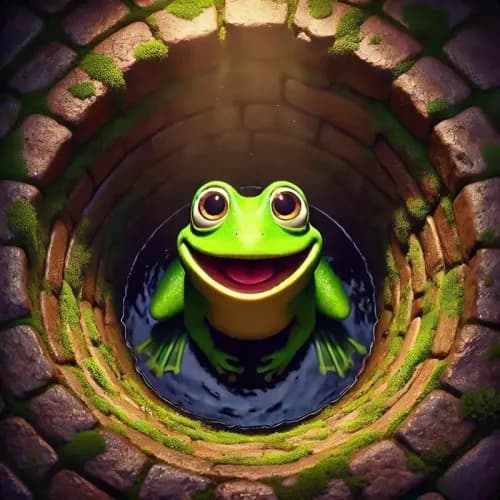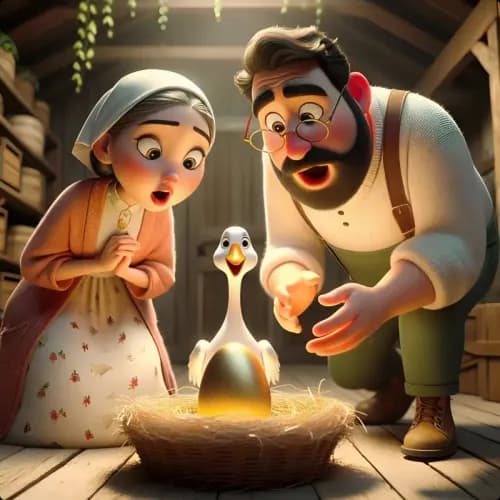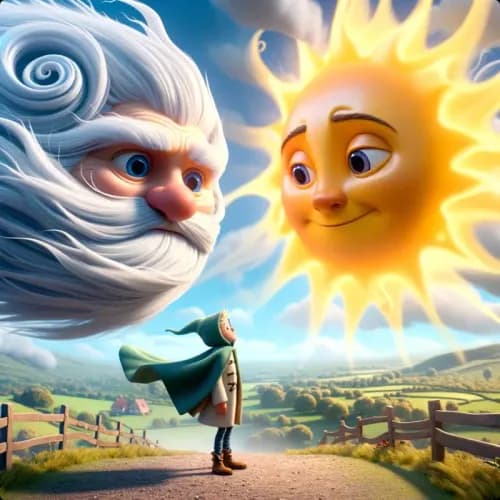Aesop | Greece
Die Ameise und die Heuschrecke
Eine eifrige Ameise sammelt Essen für den Winter, während ein Grashüpfer spielt und schließlich hungern muss.

Es war einmal auf einer großen Wiese, da lebten eine Ameise und ein Grashüpfer. Die Ameise war sehr fleißig. Während der sonnigen Sommertage sammelte sie Essen für den Winter. Jeden Tag fand sie Weizen- und Maiskörner und brachte sie zurück in ihr Zuhause.
Der Grashüpfer hingegen liebte es, Spaß zu haben. Er verbrachte seine Tage damit, Lieder zu singen und unter der Sonne zu tanzen. Er spielte seine Geige und hüpfte umher, ohne sich Sorgen zu machen. Er dachte nie daran, was er in der Zukunft brauchen würde und sparte kein Essen für die kälteren Jahreszeiten.
Dann kam der Winter. Es war sehr kalt und es gab nirgendwo Essen. Die Ameise hatte es gemütlich in ihrem warmen Zuhause und genug zu essen. Der Grashüpfer allerdings war sehr hungrig und hatte keinen Ort, um sich warmzuhalten.
Traurig und voller Selbstmitleid ging der Grashüpfer zum Haus der Ameise und bat sie um etwas Essen. Die Ameise fragte ihn: „Warum hast du im Sommer kein Essen gesammelt, so wie ich es getan habe? Jetzt musst du die Folgen deines Nichtstuns tragen.“
Nachdem sie das gesagt hatte, ging die Ameise zurück in ihr Zuhause und ließ den Grashüpfer draußen in der Kälte stehen. Der Grashüpfer war sehr traurig und bereute es, nicht fleißig gewesen zu sein, als er die Chance dazu hatte.
Kaufen Sie ein Buch und helfen Sie dabei, Fabeln in die Welt zu bringen
Genießen Sie 25 ausgewählte Fabeln fürs Leben, gedruckt. Jeder Kauf unterstützt kostenlose Geschichten für Kinder, Eltern und Lehrer weltweit auf fablereads.com

















